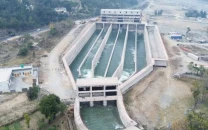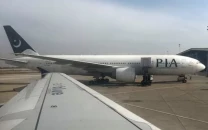French contribution: Dig deeper to explore true Pakistan
Seminar highlights research on Pakistan, emphasise expanding cooperation base.

French Ambassador Phillipe Theubaud. PHOTO: MYRA IQBAL
Continued academic collaboration with the western world can help portray to the world the soft image of Pakistan, which is mostly considered a source of the bad news.
This was the crux of the speeches made at the opening ceremony of a seminar on “French Contribution to Pakistan Studies” at Quaid-i-Azam University (QAU) on Monday.
The seminar was organised by the French Embassy in collaboration with QAU and Alliance Francaise Karachi.

Fifteen French scholars presented their research findings covering the themes of palaeontology, archaeology, post-colonialism, language, culture and Pakistan’s security situation.
French Ambassador Philippe Thiebaud, the chief guest, said it was unfortunate that perception about Pakistan in the West was focused on the security problems. An alternative dialogue on history and heritage might help in dispelling the negative image of the country.
Thiebaud said this seminar is a great example of the partnership. “It is not just an exchange of books but also an exchange of people.”
The embassy is trying to help expand the scope of academic collaboration to other subjects including international relations and contemporary studies, he said.
The Centre for Social Sciences in Karachi, which started coordinating the French scientific research at Alliance Francaise in 2011, is an example of the embassy’s long-term vision, the ambassador said. QAU Rector Masoom Yasinzai said it was also the responsibility of our researchers to introduce the country to the world in a positive light.

Gregoire Metais of The National Centre for Scientific Research (CNRS) and Jean-Loup Welcomme of the National Museum of Natural History presented their findings from groundbreaking research done at the Bugti Hills in Balochistan, where they were able to find the first full skeleton of Baluchitherium- a gigantic extinct mammal resembling a hornless rhinoceros.
Researcher Aurore Didier from the CRNS presented findings from 35 years of excavations done by a CNRS expert Jean-Francois Jarrige in the Kachi-Bolan area of Balochistan. The excavations have provided a host of information on the Mehergarh archaeological site, tracing it from the Neolithic 8th Millennium down to the 1st Millennium BC.
Jarrige’s research has provided evidence about the burial practices, tools and crafts of the people of Mehergarh including the earliest evidence of practical dentistry in archaeological history.
The findings also explained the connection between the Mehergarh and Indus Valley civilizations and filled the gap between the Indus Valley period and the Vedic age, Didier said.
Published in The Express Tribune, February 4th, 2014.



















COMMENTS
Comments are moderated and generally will be posted if they are on-topic and not abusive.
For more information, please see our Comments FAQ